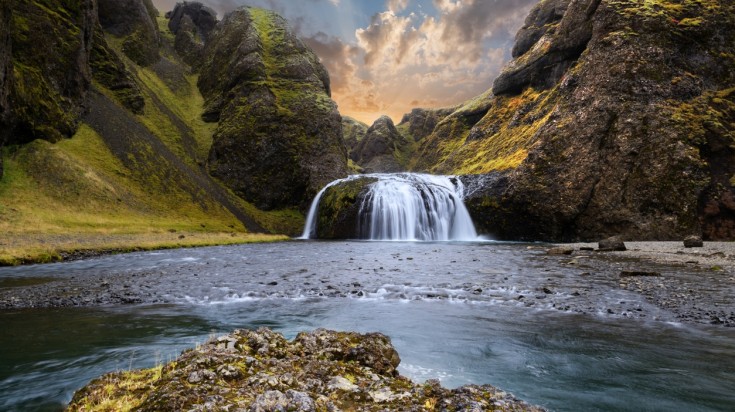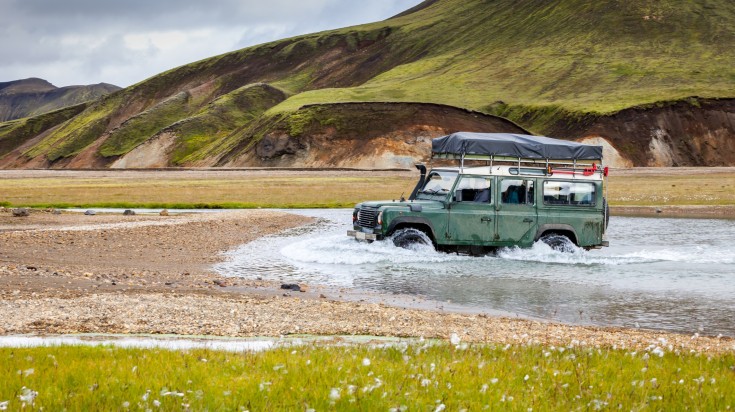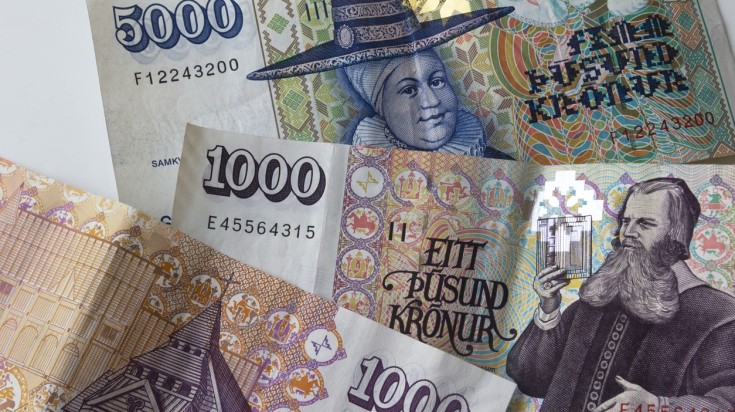Planning a Trip to Iceland: All You Need to Know

- Jane W
- From
- Jane W
- From
- Leslie E
- From
- Danine D
- From
Best Time to Visit Iceland

The best time to visit Iceland is during the summer months, from June to August. This period is marked by mild weather and extended daylight hours. Destinations otherwise inaccessible during other times of year are open for exploration. The F-roads that lead to the highlands have no restrictions. However, if your goal is to experience the Northern Lights at their peak, the winter season, between December and February, is the ideal time to visit Iceland.
More Information:
Iceland in Summer
Iceland in June
Iceland in July
Iceland in August
5 Best Destinations in Iceland


Iceland is home to colorful and captivating vistas with unique geographical features. Here, we have compiled six of the best destinations to see and visit in Iceland:
- Reykjavik: A Reykjavik tour is a no-brainer for anyone visiting Iceland since it is the first destination they set foot on after landing at Keflavík International Airport. The capital city of Iceland boasts a rich cultural scene, with museums like the National Museum and Harpa Concert Hall. Stroll along the charming Old Harbour, and don't miss the iconic Hallgrímskirkja church for panoramic city views. The lively downtown area offers excellent dining and shopping options. After all the walking and sightseeing, take a trip to the Blue Lagoon, where you can relax as you soak in its rejuvenating, milky-blue waters rich in minerals. And if you happen to be a party person, Reykjavik has a vibrant nightlife.
- Golden Circle: The Golden Circle is a must-visit for its three main attractions: the Geysir Geothermal Area, the Gullfoss waterfall, and the Unesco-listed Thingvellir National Park. Witness Strokkur's spectacular eruptions at Geysir, marvel at Gullfoss's mighty cascade and walk between Thingvellir's tectonic plates. This compact circuit travels through several geological marvels and spectacular landscapes, all conveniently accessible from Reykjavik if you drive the Iceland Ring Road (Route 1).
- Vik: Vik is a picturesque village that serves as the highlight of a trip to Iceland's South Coast. It offers dramatic black sand beaches, basalt sea stacks, and the iconic Reynisfjara beach. Explore the otherworldly basalt column caves at Reynisdrangar and take in breathtaking views from the Dyrhólaey promontory. Vik also serves as the gateway to the beautiful landscapes of the South Coast, including waterfalls like Skogafoss and Seljalandsfoss, making it a prime location for nature enthusiasts.
- Vatnajokull: Vatnajokull, Europe's largest glacier, is a vast icy wilderness. Explore this wintry wonderland through guided glacier hikes, ice cave tours, or snowmobiling adventures. Marvel at the breathtaking Jokulsarlon Glacier Lagoon, where icebergs drift serenely, and the adjacent Diamond Beach, adorned with glistening ice jewels. Vatnajokull National Park offers diverse outdoor activities, making it a top destination for nature and adventure seekers.
- Hekla Volcano: Hekla, one of Iceland's most active volcanoes, beckons intrepid hikers and volcano enthusiasts. Embark on a challenging trek to its summit for panoramic views of the volcanic landscape. The surrounding terrain of Hekla is breathtaking, showcasing Iceland's interior's rugged beauty.
How Long to Stay in Iceland

Most of the popular destinations in Iceland lie along the Ring Road, so you can easily cover them within a week. But if you also wish to explore Iceland’s remote hiking trails and icy formations, you must spend at least 10-to-14 days in the country.
Not sure how long to stay in Iceland? Check our itinerary options.
More Information:
3 days in Iceland
7 days in Iceland
Two weeks in Iceland
How to Get to Iceland

The best ways to reach Iceland are by air or water. Keflavík International Airport is your stop if you're traveling by air. Formally known as Leifur Eiríksson International Air Terminal, the airport is nearly a 48-kilometer drive from Reykjavik.
If you are planning to take the waterway to reach Iceland, you will need to take a ferry from Denmark or the Faroe Islands. You can also opt to drive through Europe and then take a car ferry from mainland Europe to Iceland. Traveling to Iceland in your vehicle can be an adventurous and convenient choice, especially if you are looking to explore the country at your own pace and have the freedom to access more remote locations.
Getting Around

Iceland has three popular modes of travel when you are getting around.
- Car: Traveling around Iceland by car is highly recommended for flexibility and access to remote areas. Renting a car is straightforward, and you can choose from various vehicle types, including 4x4 Super Jeeps for off-road adventures. Iceland's. Ring Road connects significant attractions, but many roads are unpaved, so ensure your vehicle suits your itinerary. Fuel stations are readily available. However, driving in winter can be challenging due to icy roads and limited daylight hours.
- Bus: Iceland's bus network is extensive, with routes connecting major towns and attractions. The BSI Bus Terminal in Reykjavik is the central hub where you will find several bus operators, including Reykjavik Excursions and Sterna Travel, heading to different parts of the country. You can book tickets online or at the terminal itself. While bus travel is a cost-effective and more eco-friendly way to travel around Iceland, it may not provide as much flexibility or access to remote spots.
- Taxi: Taxi are available to get around urban areas like Reykjavik but can be expensive for long journeys. They are not a practical choice for extensive travel around Iceland due to the high cost.
- Airplane: With more than 464 authorized airports, domestic flights are available between Reykjavik and regional airports, providing a quick way to cover long distances. However, flights can be expensive and limit your ability to explore Iceland's scenic landscapes. This option is ideal for those with limited time or specific destinations.
Budget and Money

You can budget USD 150 to USD 250 per day per person for meals, accommodations, and local transportation for your Iceland trip. Budget-conscious travelers can cap their daily expenses at around USD 100 to USD 150 by staying in hostels or guesthouses, eating at affordable restaurants, and using public buses or car rentals. A week-long trip for two people, with a budget accommodation option, can cost approximately USD 2,100. Remember that prices can vary depending on the season, with summer being more expensive. Excursions and activities can add to your expenses, so plan accordingly.
*Note: The prices mentioned above are valid as of the financial year 2023/24 and are subject to change.
More information:
Iceland budget tours
Iceland luxury tours
What You Didn’t Know (But Should)

- Iceland is a mosquito-free country. So, no need to pack excessive bug repellent when exploring Icelandic nature.
- Icelanders don't have traditional surnames. Instead, they use a patronymic or matronymic system, taking their father's or mother's first name and adding "son" (son of) or "dóttir" (daughter of). For example, if your father's name is John, you'd be John's son or John's daughter.
- Many Icelanders believe in the existence of elves and hidden people called Huldufólk. So, you will find roads rerouted and buildings redesigned to avoid disturbing these mythical beings' habitats.
- Iceland is a global leader in renewable energy. Approximately 85% of the country's total energy production comes from renewable sources, particularly geothermal and hydropower, making it an eco-conscious destination.
- Iceland is one of the few countries in the world without a McDonald's restaurant. The fast-food giant left the country in 2009 due to high operating costs.
- Pylsa, Icelandic hot dogs, are a local favorite, often served with crispy onions, ketchup, remoulade, and a unique blend of lamb, beef, and pork. You'll find them at roadside stands and gas stations.
- Tipping is not customary in Iceland. Service charges are typically included in bills, so there's no need to leave an additional tip at restaurants. However, tipping tour guides or exceptional service is appreciated.
- In some parts of Iceland, puffins are considered delicacies and even served in restaurants. While they are adorable and protected in other areas, you may encounter them on a menu in a few coastal towns.
- Do not get alarmed if you see an unsupervised baby carriage on the sidewalk. Icelanders have a long-standing tradition of sunbathing their babies while keeping a watch from the nearest window.
Safety
- Iceland’s weather can be unpredictable, especially during the winter season, so be sure to check the weather and road conditions on safetravel.is.
- While hiking the remote regions of Iceland, inform your close ones about your whereabouts so you can be on the safe side at all times.
- Do not attempt to swim in the glacial waters of Iceland except during the peak summer months, as the water temperatures can be freezing.
- Do not drive beyond the designated roads, and adhere to the traffic rules.
- Do not take the F-roads unless you are driving on a 4x4 Super Jeep.
If you need help planning a trip to Iceland, let our local experts customize your trip to Iceland.
Tour options in the country:
Customized trip to Iceland
Iceland Private tour
Group tours in IcelandGuided trips to Iceland







